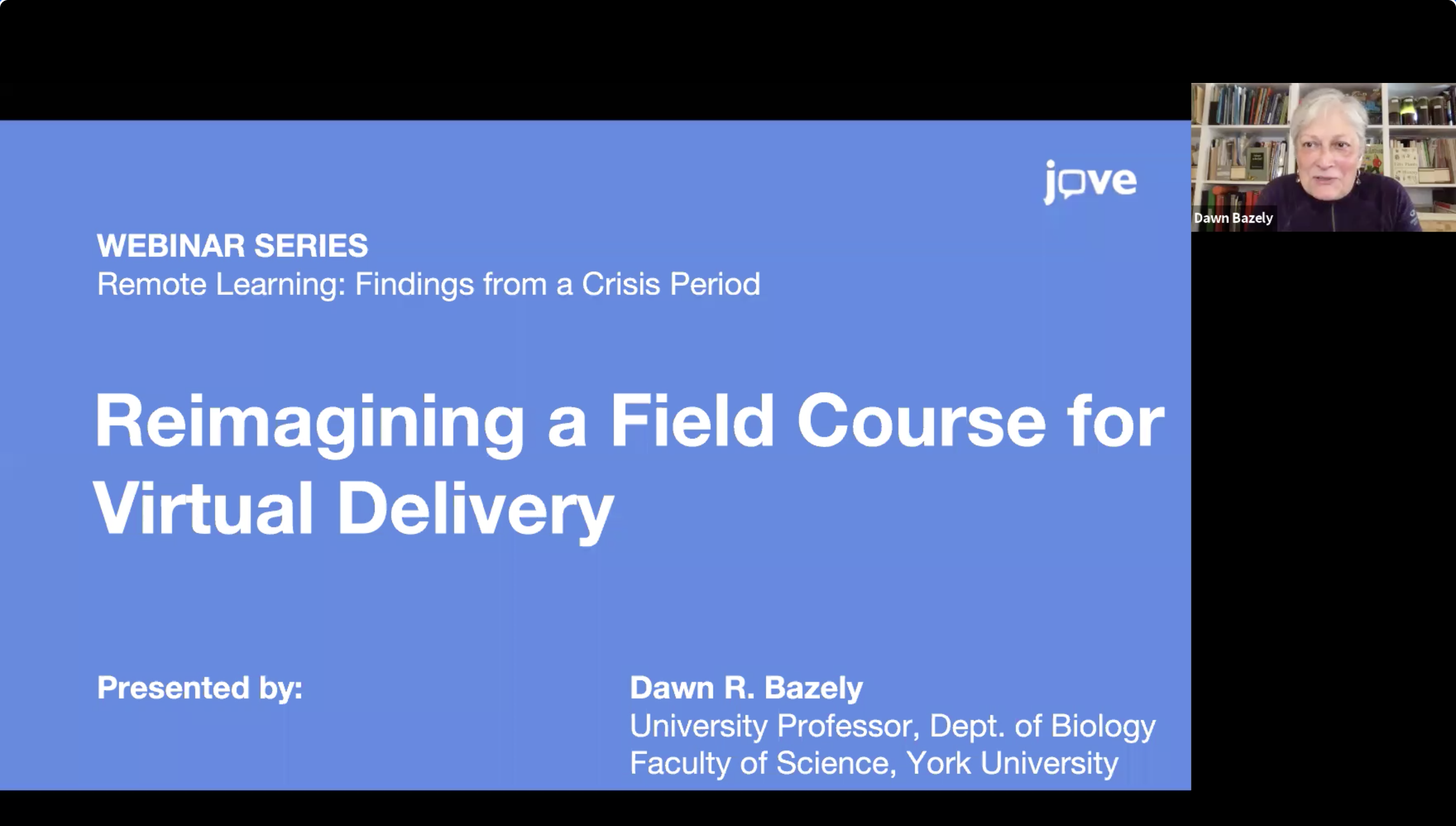In March, Dr. Dawn Bazely — University Professor in the Department of Biology at York University — was faced with the task of transforming her Biodiversity & Watershed Management field course into a fully remote format. She devoted over 70 hours a week to planning and developing the course for virtual delivery, even building $20 lab kits to help students learn experientially from their own homes.
During our remote learning webinar series, Dawn discussed the process, and shared her ten principles for reimagining any science lab course for virtual delivery. We’ve brought together five key takeaways from her webinar.
If you would like access to a full video recording of Dawn’s webinar, presentation slides and additional material, let us know here.

Dr. Dawn Bazely
1. Reflect on what got you interested in science
How do you help students learn science hands-on at home? Dawn asks instructors to reflect on what excited them about science before they had access to high-tech lab equipment — whether it was science assignments they worked on in grade school, or even children’s science books. Her upcoming plant ecology lab, for instance, includes an experiment that she adapted from one of her daughter’s high school projects.
She also suggests that instructors could look to the history of their discipline for inspiration. From Charles Darwin to Hans Adolf Krebs, the history of science is rife with examples of scientists who used simple instruments to investigate the natural world.
2. Save costs by blending high-tech and low-tech equipment
Dawn promotes an approach called ‘frugal innovation’ — blending high-tech with low-tech equipment to save costs. In her cost-efficient remote lab kit, Dawn included a variety of low-tech items that students could use to conduct their very own research in their homes. This included $3 cardboard microscopes, macro lenses that they could use to turn their smartphone cameras into dissecting microscopes, pH strips, symbiotic cultures of bacteria and yeast (SCOBY), seeds, soil to grow plants, and much more.
Ultimately, she notes, simplicity is key. “If it’s going to be too much, drop it, and make use of what’s available on the internet. There’s a lot of inexpensive kits you could use,” she notes.
3. Have open channels of communication with your students
“[The students] were the knowledge co-creators and collaborators with me in this pedagogical journey,” says Dawn, noting the importance of communicating with students regularly. She kept office hours every day, even giving students her phone number in case of remote fieldwork emergencies. Her keen understanding of her students’ remote learning experiences led her to devise innovative additions to her remote lab kit — such as a pair of scissors, which her students found very helpful. “I knew that their parents would not appreciate them using the kitchen scissors to cut up garbage to make watershed models,” she explained.
In addition, Dawn stresses the importance of reassuring students that fieldwork failures are part of the process of science. Extra time for assignments can also help relieve some of the academic pressure that might stem from remote learning.
4. Prepare for the possibility of a digital divide
Initially, Dawn planned to create her own instructional videos. Due to internet access constraints, however, students could not view the videos unless she made the video files small enough. “[This process] was so much work that to be honest I was just grateful for existing online content that I could press into use,” she noted, pointing out that JoVE video resources were particularly helpful for this task.
She suggests that other instructors could learn from her labor, offering ways to prepare for the lack of reliable internet in remote classrooms. To help students who might face internet issues, she delivered the course in both synchronous and asynchronous formats. She also built redundancies into her syllabus, so if a student’s internet connection was lost at any point, they could make up for it with other assignments at a later time.
5. Be open to seeking help and resources from all avenues
Dawn sought the help of visiting speakers, including a soil ecologist, a biodiversity heritage librarian, a map librarian and many more guests, who spoke to her students about their work. The speakers were also able to suggest internet resources, which students used to build out their projects further. She notes that her students loved the involvement of guest speakers.
Her course also incorporated a technique from JoVE for creating Winogradsky columns, which she discovered via Twitter, and a blog post on journaling, which she discovered on the website of her favorite pencil manufacturer. “I was open to everything,” says Dawn. “Take input from everywhere.”
Interested in learning more about how members of the academic community have addressed remote learning challenges? Request a video recording of our October 2020 webinar series 'Remote Learning: Findings from a Crisis Period'.

